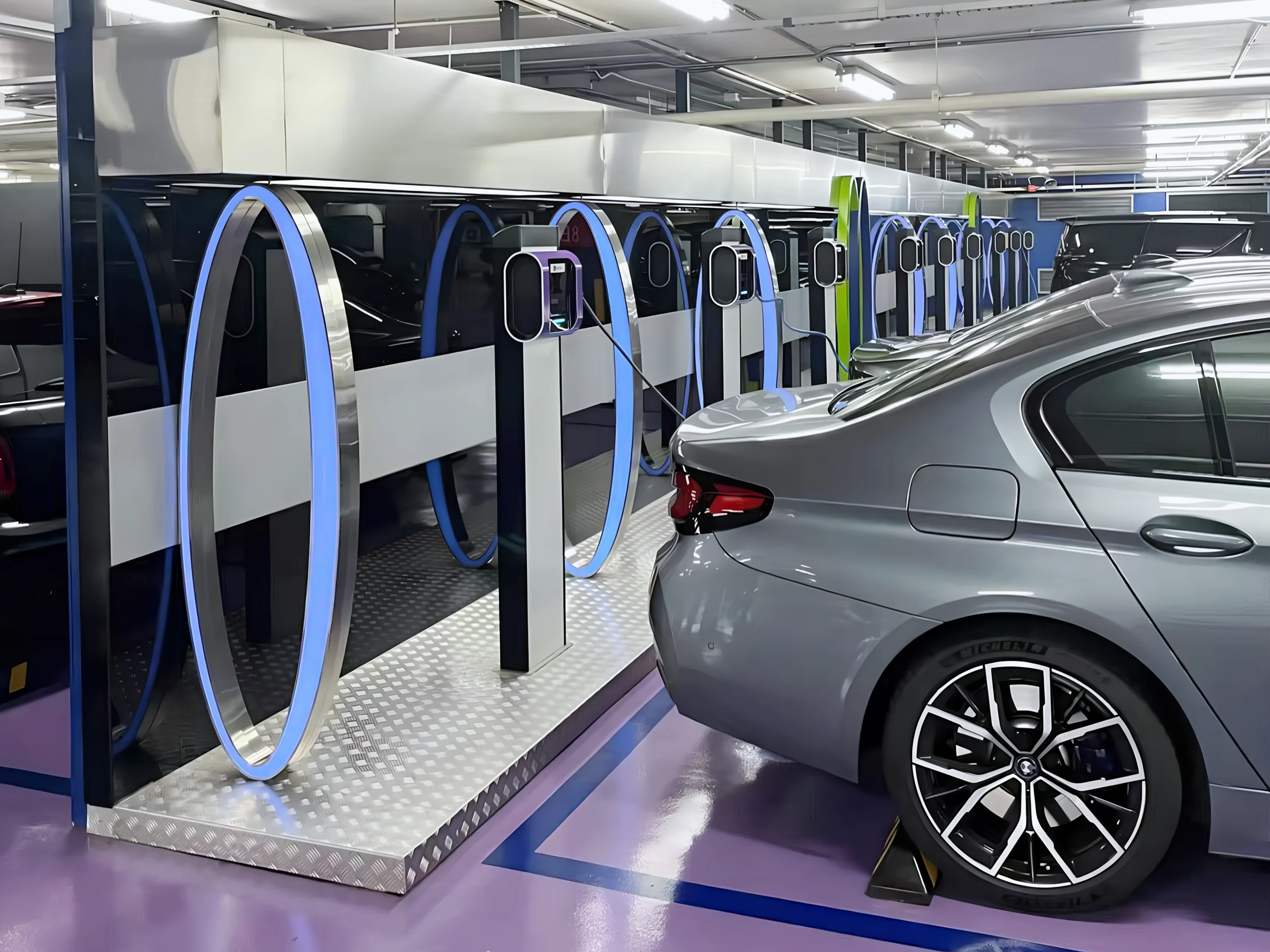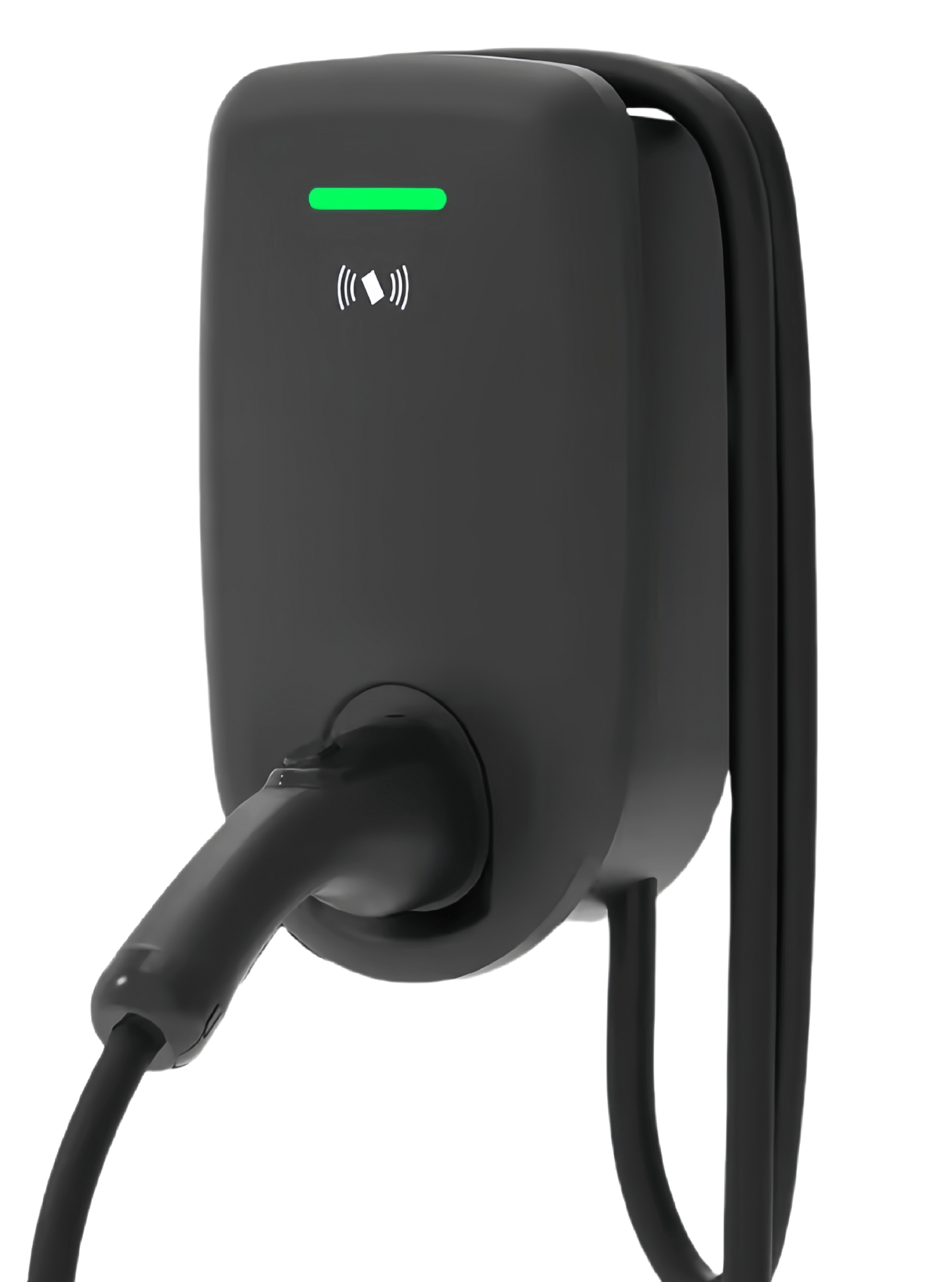Introduction: Why Businesses Invest in Commercial Charging Stations
In recent years, the rise of electric vehicles has been reshaping global transportation. For B2B buyers, particularly in regions like Southeast Asia and the Middle East, this trend is no longer just a distant vision—it is an emerging business reality. Fleets, logistics providers, retail hubs, and real estate developers are increasingly looking for ways to integrate commercial commercial ev charging stations into their operations.
For companies in the supply chain of energy, mobility, and property development, investing in a commercial charging station is not just about supporting clean energy. It is also about creating opportunities for business growth, customer attraction, and long-term positioning in an evolving market. A charging station for business operations offers a visible sign of modernization and can become a vital infrastructure asset.
Unlike private home charging, commercial charging solutions serve a broader customer base—drivers on the move, fleet operators needing predictable schedules, and businesses looking to enhance their service offerings. This wider application creates revenue potential, builds customer loyalty, and strengthens partnerships with stakeholders across industries.
From a B2B perspective, the decision to set up a commercial charging station is often tied to larger business strategies. Companies do not simply buy equipment; they invest in infrastructure that aligns with their long-term vision, their brand values, and their market positioning. Understanding this bigger picture is the first step in exploring how a commercial charging station can be a valuable asset in the years to come.

Understanding the Role of Commercial Charging Stations in EV Infrastructure
When discussing EV charging infrastructure, it is important to understand that it is made up of multiple layers. On one end, there are private charging options—residential chargers installed in homes, typically serving individual users. On the other end, there are public charging solutions provided by municipalities, energy companies, or large networks. Commercial charging stations occupy a middle ground that connects businesses with these wider infrastructures.
For example, a shopping mall that installs a commercial charging station is not only offering a service to its visitors but also connecting its property to a larger ecosystem of electric mobility. A fleet operator that sets up a dedicated charging hub is building the backbone for efficient logistics. In both cases, the commercial charging station becomes a crucial node in the mobility network. The power level of these stations, such as versatile 7-22kw электрические зарядные станции, directly supports this role by balancing charging speed with grid compatibility, making them suitable for diverse destinations and operational needs.
From a B2B standpoint, the role of a commercial charging station is multi-dimensional:
Customer-facing infrastructure: Businesses such as retail centers, hotels, and office complexes can use charging stations as a value-added service that attracts and retains customers.
Operational backbone: Fleet-based businesses, whether in logistics, ride-hailing, or public transportation, rely on commercial charging solutions to keep vehicles on the road.
Partnership enabler: Charging infrastructure often creates opportunities for businesses to collaborate with real estate developers, energy providers, and local authorities.
This positioning makes commercial charging stations an essential part of building the future of transportation. For B2B buyers, recognizing this role means understanding that the investment is not isolated—it ties into a wider strategy of connectivity, sustainability, and competitive advantage.
Key Considerations Before Setting Up a Commercial Charging Station
For businesses exploring the idea of setting up a коммерческая зарядная станция, there are several key considerations. Unlike small-scale private solutions, commercial infrastructure requires careful planning that covers location, operational strategy, and long-term scalability. Below are some of the most important factors:
Location and Accessibility
Location is the cornerstone of a successful commercial charging station. Businesses must think strategically about where the chargers will be placed. Retail locations often seek high-traffic areas where drivers can charge their vehicles while shopping. Fleet operators may focus on proximity to highways or logistics hubs where downtime can be minimized. Accessibility is not just about physical convenience; it also includes visibility, safety, and integration with other services.
Business Model and Monetization
A commercial charging station for business use is not only about offering electricity—it is also about creating a viable business model. Companies must decide whether they want to use charging stations as a direct revenue stream, as a value-added service to attract customers, or as part of a long-term branding effort. B2B buyers often evaluate different strategies, such as pay-per-use models, subscription services, or bundled offerings with existing business lines.
Infrastructure and Grid Readiness
Another critical consideration is the readiness of local infrastructure. Commercial charging solutions require reliable energy access, proper electrical design, and in some cases, collaboration with utility providers. For B2B buyers, this means conducting feasibility studies and ensuring that the grid capacity matches the projected demand.
Масштабируемость и защита на будущее
Investing in a commercial charging station should not be a short-term decision. Businesses must plan for growth, considering how future demand may expand beyond the initial setup. B2B buyers should think in terms of modular systems that can grow with their operations, ensuring that the infrastructure remains relevant even as vehicle technology and charging standards evolve.
Regulatory and Compliance Requirements
Before installation, businesses also need to ensure compliance with local regulations and standards. This includes safety requirements, land-use permissions, and energy distribution laws. For B2B buyers in Southeast Asia and the Middle East, regulations may vary significantly by country, making it essential to work with partners who understand regional requirements.

Essential Components of a Commercial Charging Station
While commercial charging stations can vary in complexity, certain core components are common across most setups. Understanding these elements helps B2B buyers evaluate what is necessary without getting lost in technical details or product parameters.
Power Supply and Energy Management
The backbone of any commercial charging station is its power supply. Businesses must ensure that the station is connected to a stable energy source capable of handling the expected load. For high-power setups such as a 7kw electric car charging station, robust energy management becomes even more critical to ensure grid stability and prevent overload. Beyond basic supply, energy management systems are often integrated to balance usage, reduce costs, and improve efficiency.
Charging Equipment
The visible part of the infrastructure is the charging unit itself. For B2B buyers seeking reliable partners, working with a trusted Производитель коммерческих зарядных станций ensures long-term durability and consistent quality. For B2B buyers, what matters is not just the design but also the reliability and compatibility with a range of vehicles. Commercial environments demand durable solutions that can handle frequent usage over long periods.
Software and Backend Management
A commercial charging station is not complete without an intelligent software layer. This includes payment processing, user authentication, energy tracking, and maintenance alerts. From a B2B perspective, robust backend management ensures smooth operations and allows businesses to scale efficiently.
Safety and User Experience
Safety is a critical concern. Charging stations must be designed to protect both users and equipment from electrical risks. Beyond safety, user experience matters—easy access, clear instructions, and convenient payment systems all contribute to making the station successful.
Integration with Business Operations
Finally, a commercial charging station must integrate seamlessly with broader business operations. Whether it is a hotel offering a charging service for guests, or a logistics company using charging hubs for fleets, the station should align with the company’s operational goals. This integration maximizes both the utility and the return on investment.
Business Benefits of Installing Commercial Charging Stations
For B2B buyers, investments are always evaluated through the lens of long-term value creation. A коммерческая зарядная станция may begin as an infrastructure upgrade, but over time it can become a multi-dimensional asset that enhances revenue streams, customer loyalty, and corporate reputation.
Enhancing Customer Experience and Brand Perception
Businesses in retail, hospitality, and property development increasingly find that customers expect convenient charging options. When a company provides public charging solutions at its premises, it signals innovation and forward-thinking. For fleet-based companies, offering charging stations builds trust with partners and demonstrates reliability. In both cases, the station becomes a visible extension of the company’s brand identity.
Creating Additional Revenue Opportunities
A commercial charging station for business use can generate direct revenue. For example, 7-11kw charging stations for electric vehicles can serve as an ideal solution for destinations where customers spend extended periods, such as shopping centers or workplaces, enabling efficient charging while capturing longer customer engagement. Depending on the chosen business model, companies may charge per session, create membership options, or bundle services with other offerings. Beyond direct income, the presence of charging stations often drives indirect revenue by increasing customer dwell time and encouraging repeat visits.
Supporting Sustainability and Corporate Responsibility
In today’s B2B environment, sustainability is more than a buzzword—it is a requirement. Many organizations prioritize partnerships with businesses that align with green initiatives. By installing a коммерческая зарядная станция, companies not only serve immediate operational needs but also position themselves as environmentally responsible partners, strengthening their appeal in competitive markets.
Building Long-Term Business Partnerships
Charging infrastructure often creates opportunities for collaboration. Property developers may partner with energy companies, logistics providers, or technology integrators to offer integrated services. B2B buyers who invest in charging stations often open the door to new strategic alliances, from joint ventures to co-branded initiatives.
Challenges B2B Buyers Face and How to Overcome Them
While the advantages are clear, B2B buyers must also recognize the challenges of implementing коммерческие зарядные станции. Addressing these obstacles early ensures smoother deployment and long-term success.
Market Competition and Location Risks
Choosing the wrong site can undermine profitability. In areas where multiple businesses set up charging stations, oversupply may reduce utilization rates. To overcome this, B2B buyers should conduct thorough market assessments, identifying high-demand zones and strategically positioning their infrastructure where it delivers maximum visibility and usage.
Operational and Maintenance Considerations
Unlike small-scale private charging, commercial setups require ongoing operation and regular maintenance. Faults or downtime can damage customer trust and lead to revenue loss. The solution lies in investing in reliable equipment, training staff, and adopting software-driven monitoring systems that provide real-time alerts.
Capital Expenditure and Investment Horizon
For many businesses, the upfront cost of a коммерческая зарядная станция is a significant concern. Unlike consumer-level products, B2B infrastructure is expected to last and evolve. Buyers should frame the investment not as a one-time purchase but as part of a long-term strategy, often integrating it into broader sustainability budgets or infrastructure development plans.
Regulatory and Utility Coordination
In both Southeast Asia and the Middle East, utility regulations, grid access requirements, and safety codes can be complex. Navigating this environment requires local expertise. Many companies reduce complexity by choosing comprehensive commercial Установка зарядной станции для электромобилей solution that cover design, permits, and integration. Many successful B2B buyers work with consultants, distributors, or technology partners who understand regulatory frameworks and can streamline the approval process.
Customer Adoption and Behavioral Change
Even in markets where electric vehicles are gaining traction, customer behavior can be unpredictable. Some businesses may worry about slow adoption. This challenge can be mitigated by pairing charging stations with incentives—such as offering initial discounts, bundling with parking benefits, or collaborating with fleet operators who guarantee baseline usage.

Market Opportunities in Southeast Asia and the Middle East
The decision to invest in коммерческие зарядные станции is strongly influenced by regional dynamics. For B2B buyers in Southeast Asia and the Middle East, the opportunities are unique, shaped by mobility trends, infrastructure readiness, and consumer expectations.
Southeast Asia: Fast-Growing Urban Mobility Needs
In Southeast Asia, urban centers are growing rapidly, creating strong demand for EV charging infrastructure. Cities with heavy traffic and dense populations provide fertile ground for businesses to establish commercial charging stations. For retail chains, property developers, and logistics operators, this market represents an opportunity to capture early adoption while supporting the region’s shift toward sustainable transport.
B2B buyers in this region must focus on integration. Charging stations are often most successful when combined with existing facilities, such as malls, office complexes, and transport hubs. By embedding charging services into these environments, businesses can create steady demand while reinforcing customer loyalty.
Middle East: Strategic Expansion and Infrastructure Development
The Middle East presents a different but equally compelling case. Governments in this region are investing heavily in new infrastructure, positioning themselves as leaders in clean energy and mobility. For B2B buyers, this creates a supportive environment for commercial charging station deployment.
Opportunities exist not only in urban centers but also in long-distance corridors where public charging solutions are essential for intercity travel. Businesses that position themselves early can capture partnerships with real estate developers, fleet operators, and government-backed initiatives.
Strategic Positioning for B2B Buyers
Across both regions, timing and partnerships are critical. Companies that move early often secure premium locations and long-term contracts with stakeholders. B2B buyers should view commercial charging stations not only as stand-alone assets but as entry points into broader ecosystems, including renewable energy integration, digital payment systems, and fleet management solutions.

Conclusion: Building a Future-Ready Commercial Charging Station Strategy
For B2B buyers in Southeast Asia and the Middle East, the decision to invest in a коммерческая зарядная станция is about far more than installing hardware. It represents a strategic move into the future of transportation, energy, and customer engagement.
By understanding the role of charging infrastructure, addressing challenges proactively, and capitalizing on market opportunities, businesses can create a roadmap that strengthens their competitive position. The most successful B2B buyers will be those who:
Think long-term, treating commercial charging stations as evolving infrastructure rather than one-time purchases.
Align with customer needs, offering charging as part of an enhanced service experience.
Leverage partnerships, working with local authorities, property developers, and fleet operators.
Adapt to regional dynamics, tailoring strategies to the unique conditions of Southeast Asia and the Middle East.
Ultimately, a commercial charging station is more than a piece of equipment—it is a strategic platform. For businesses seeking growth, differentiation, and long-term sustainability, investing in this infrastructure can be the cornerstone of a stronger, future-ready market presence.



